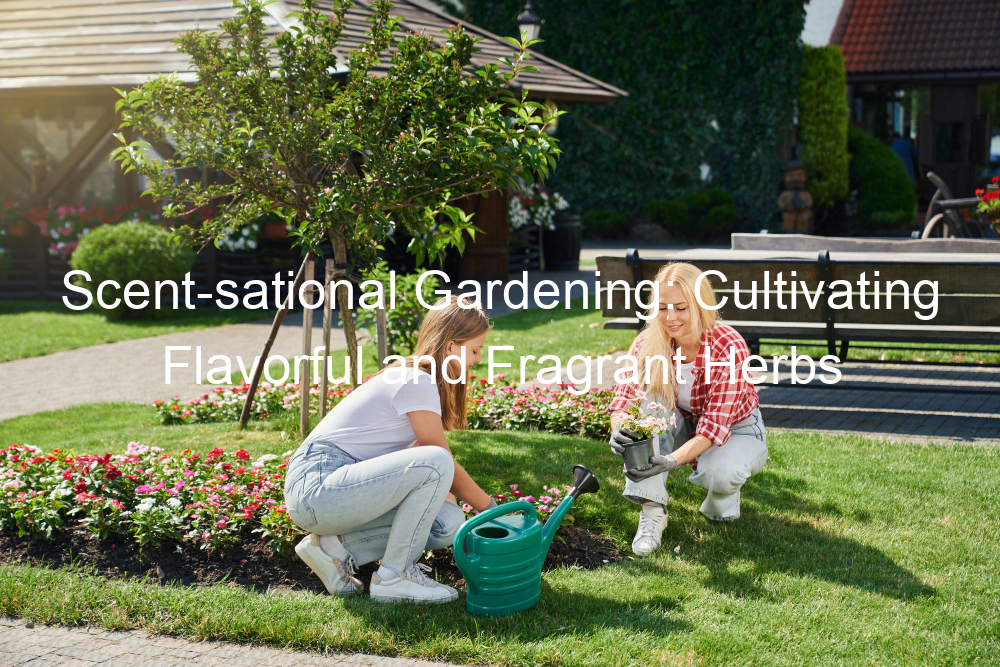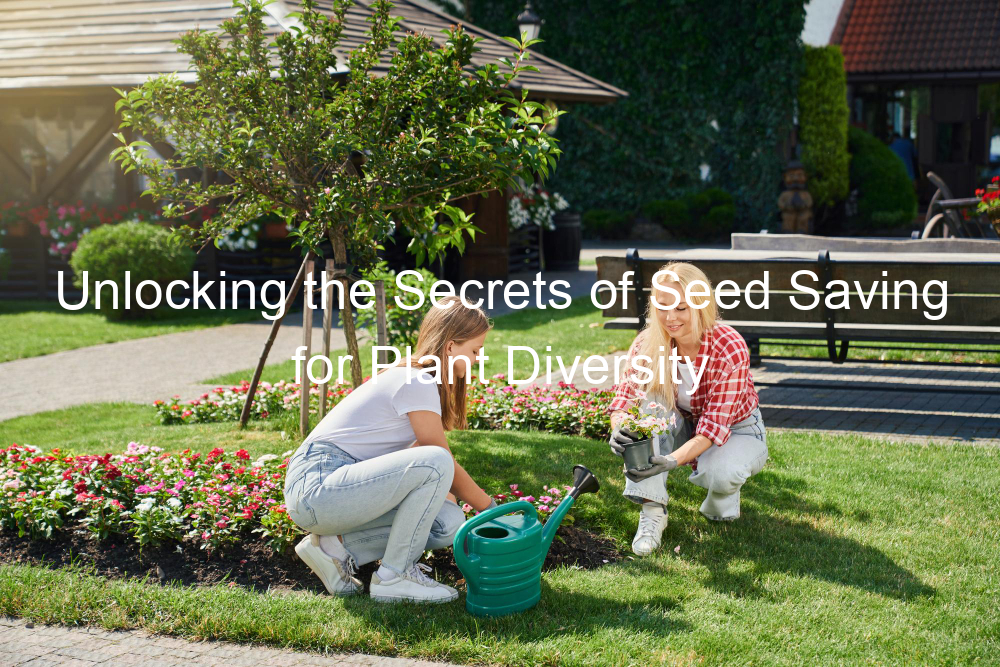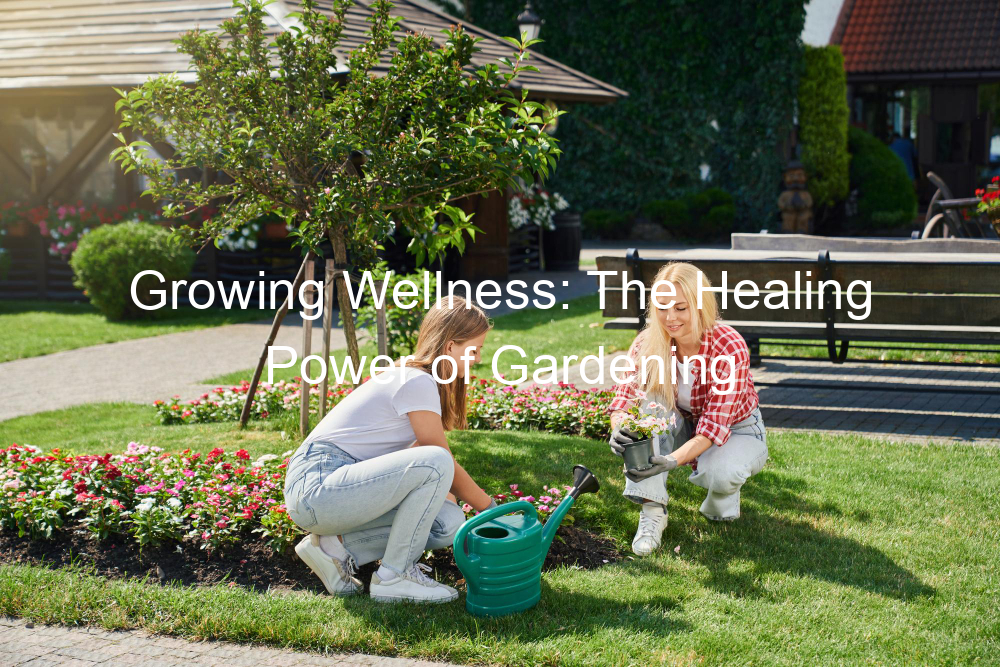Introduction to Scent-sational Gardening
Welcome to the world of scent-sational gardening! This is a unique style of gardening that focuses on growing aromatic herbs. These herbs not only add a delightful fragrance to your garden but also have numerous benefits.
-
- Overview of the benefits of growing aromatic herbs
Aromatic herbs are a joy to grow. They are not only visually appealing, but their scents can also transform your garden into a fragrant paradise. These herbs are known for their strong and pleasant odors which are released when their leaves are crushed or when they bloom.
But the benefits of aromatic herbs go beyond their delightful scents. They are also known for their medicinal properties. For instance, lavender is known for its calming effects and is often used in aromatherapy to reduce stress. Mint, on the other hand, is known for its refreshing scent and is often used in teas and other beverages for its soothing effects.
-
- Understanding the importance of fragrant and flavorful herbs
Fragrant and flavorful herbs are a must-have in every garden. They not only add a unique aroma to your garden but also enhance the flavors of your dishes. Imagine cooking with fresh basil, rosemary, or thyme from your garden. The flavors they add to your dishes are incomparable to the dried herbs you buy from the store.
Moreover, fragrant herbs like rosemary, lavender, and mint are known to attract pollinators like bees and butterflies to your garden. This not only helps in the pollination of your plants but also adds a vibrant touch to your garden.
It’s about creating a sensory experience that delights the eyes, nose, and palate. So, why not start your scent-sational garden today?
Understanding Herb Gardening
Herb gardening is a delightful and rewarding activity that can transform your cooking and your garden. Let’s delve into the basics of herb gardening and understand why it’s a hobby worth pursuing.
Basics of Herb Gardening
Herb gardening is not as complicated as it might seem. Even if you are a beginner, you can start your herb garden with a little planning and care. Here are some fundamental aspects to consider:
- Introduction to herb gardening: Herb gardening is the practice of growing herbs, which are plants used for their culinary, medicinal, or fragrant properties. It’s a great way to add fresh flavors to your meals and create a fragrant environment in your home or garden. You can start with easy-to-grow herbs like mint, basil, and rosemary.
- Benefits of cultivating herbs for fragrance and flavor: Cultivating herbs can be beneficial in many ways. For one, they add a fresh and unique flavor to your dishes that you can’t get from store-bought herbs. Additionally, many herbs like lavender and rosemary have a pleasant fragrance that can make your garden smell wonderful. Gardening itself is also a therapeutic activity that can help reduce stress.
Herb gardening is a journey of discovery. As you learn more about different herbs and how to care for them, you’ll find yourself becoming more attuned to the natural world and the simple pleasures it offers. So, why not start your herb garden today?
Herbs for Flavor and Fragrance
Herbs are a wonderful addition to any garden, not only for their culinary uses but also for their delightful aromas. Let’s delve into the world of flavorful and fragrant herbs.
- Understanding the Different Types of Flavorful Herbs
Herbs are the secret ingredient that can transform a simple dish into a culinary masterpiece. Each herb brings a unique flavor profile to the table. Here are some of the most popular flavorful herbs:
| Herb | Flavor Profile |
|---|---|
| Basil | Sweet and peppery with a hint of mint |
| Rosemary | Woody and lemony |
| Thyme | Subtle minty flavor with a hint of earthiness |
| Parsley | Mildly bitter and fresh |
Experimenting with these herbs in your cooking can lead to delightful discoveries. Remember, the key to using herbs is balance. Too much can overpower a dish, while too little may go unnoticed.
- Exploring the Variety of Fragrant Herbs
Herbs can also be grown for their delightful fragrances. These aromatic plants can fill your garden with natural perfume, making it a sensory haven. Here are some fragrant herbs you might consider:
| Herb | Fragrance Profile |
|---|---|
| Lavender | Sweet and floral |
| Mint | Fresh and invigorating |
| Rosemary | Strong and pine-like |
| Lemon Balm | Citrusy and refreshing |
These herbs can be used to create homemade potpourri, scented candles, or simply to enjoy in the garden. Keep in mind, the best time to enjoy the fragrance of these herbs is in the morning when the dew is still fresh on their leaves.
Starting Your Aromatic Herb Garden
Starting an aromatic herb garden is a delightful endeavor that can bring joy and flavor to your life. The first step in this journey is choosing the right herbs. This decision is crucial as it sets the tone for your garden and determines the kind of sensory experience it will provide.
Choosing the Right Herbs
When it comes to choosing herbs for your garden, there are two main factors to consider: flavor and fragrance. Let’s dig into these aspects.
-
- Factors to consider when choosing herbs for flavor
When selecting herbs for their flavor, think about the types of dishes you enjoy cooking. For instance, if you love Italian cuisine, basil and oregano would be excellent choices. Consider the climate and soil conditions in your area as well. Some herbs, like rosemary, prefer dry and sandy soil, while others, like mint, thrive in moist and rich soil. Bear in mind, the healthier the plant, the more flavorful it will be.
-
- How to select herbs for their fragrance
Choosing herbs for their fragrance can transform your garden into a sensory haven. Lavender, for example, has a soothing scent that can help reduce stress. On the other hand, rosemary has a strong, invigorating aroma that can stimulate the senses. When selecting fragrant herbs, consider their growth habits. Some herbs, like mint, can be invasive and may take over your garden if not properly managed. Also, remember to place these herbs in a location where you can easily enjoy their scent.
Choosing the right herbs for your aromatic garden is a personal journey. It’s about finding the herbs that resonate with your culinary preferences and sensory desires. So, take your time, do your research, and most importantly, have fun with it!
Planting and Cultivating Herbs
Planting and cultivating herbs is an exciting journey that requires patience, dedication, and a bit of knowledge. Let’s explore the steps to planting your herbs and tips for successful herb cultivation.
-
Steps to Planting Your Herbs
Planting herbs is a straightforward process, but it’s important to do it correctly to ensure your plants thrive. Here are the steps:
- Choose the Right Spot: Herbs need at least 6 hours of sunlight each day. Find a spot in your garden that gets plenty of sun.
- Prepare the Soil: Herbs prefer well-drained soil. Add compost or organic matter to improve the soil’s fertility and drainage.
- Plant Your Herbs: Dig a hole that’s deep and wide enough for the herb’s root ball. Place the plant in the hole and cover it with soil.
- Water Regularly: After planting, water your herbs thoroughly. Continue to water them regularly, but don’t overwater as this can lead to root rot.
-
Tips for Successful Herb Cultivation
Now that you’ve planted your herbs, it’s time to cultivate them. Here are some tips to help your herbs thrive:
- Prune Regularly: Pruning encourages bushier growth. Regularly trim your herbs to promote healthy growth and to keep them from becoming leggy.
- Feed Your Herbs: Herbs need nutrients to grow. Use a balanced organic fertilizer to feed your herbs and keep them healthy.
- Control Pests: Keep an eye out for pests. If you notice any, use organic pest control methods to keep them at bay.
- Harvest Regularly: Regular harvesting encourages more growth. Plus, you get to enjoy the fruits (or rather, herbs) of your labor!
Planting and cultivating herbs is a rewarding process. With the right steps and tips, you can enjoy a lush, aromatic herb garden right in your backyard. Happy gardening!
Growing Herbs for Cooking
One of the most rewarding aspects of gardening is growing your own herbs for cooking. Not only do they add a fresh burst of flavor to your meals, but they also fill your garden with delightful aromas. Let’s explore some of the best herbs for culinary use and how to use them in your recipes.
Best Herbs for Culinary Use
There are countless herbs that can be used in cooking, but some stand out for their exceptional flavor and versatility. Here are a few of the most flavorful herbs for cooking:
- Basil: This herb is a staple in Italian cuisine and is perfect for pasta dishes, pizzas, and salads.
- Parsley: Parsley is a versatile herb that can be used in a wide range of dishes, from soups and stews to salads and sauces.
- Rosemary: Known for its strong, pine-like flavor, rosemary is great for roasting meats and vegetables.
- Thyme: Thyme has a subtle, earthy flavor that pairs well with poultry, fish, and vegetables.
- Mint: Mint is not just for desserts and drinks. It can also add a refreshing touch to salads, sauces, and even main dishes.
Now that we’ve explored some of the most flavorful herbs for cooking, let’s look at how to use these herbs in your recipes.
- Basil: Add fresh basil leaves at the end of cooking to preserve their flavor. It’s perfect for a homemade tomato sauce or a Caprese salad.
- Parsley: Parsley can be added at any stage of cooking. Use it in a marinade for meat or fish, or sprinkle it over your dish just before serving for a burst of fresh flavor.
- Rosemary: Rosemary is best when cooked with your dish, as it releases its flavor over time. Try it in a roast chicken or a hearty stew.
- Thyme: Thyme can be used both fresh and dried. Add it to your dish early in the cooking process to allow its flavors to develop.
- Mint: Mint is best used fresh and added at the end of cooking. Try it in a refreshing cucumber salad or a zesty lamb dish.
Don’t be afraid to try new combinations and discover your own signature flavors.
Harvesting and Storing Cooking Herbs
Harvesting and storing your cooking herbs properly is essential to maintain their flavor and aroma. Let’s explore when and how to harvest your herbs and the best methods for storing them.
-
- When and how to harvest your herbs
Knowing the right time to harvest your herbs is crucial for maximizing their flavor. Generally, herbs should be harvested just before they flower, as this is when their oil content, which gives them their unique flavors and aromas, is at its peak.
Harvesting should be done in the morning after the dew has dried but before the sun gets too hot. To harvest, simply cut off the top third of the plant. Always use sharp scissors or pruners to make clean cuts and avoid damaging the plant.
-
- Methods for storing herbs to retain flavor
Once you’ve harvested your herbs, proper storage is key to preserving their flavor. Here are a few methods:
-
- Drying: This is the most common method for storing herbs. Simply tie the stems together and hang them upside down in a warm, dry, well-ventilated area away from sunlight. Once dried, store them in airtight containers.
- Freezing: Freezing herbs helps to retain their color and flavor. You can freeze herbs whole or chop them up and freeze them in ice cube trays with water or oil.
- Storing in Oil or Vinegar: Herbs can also be preserved in oil or vinegar. This not only preserves the herbs but also infuses the oil or vinegar with their flavor.
So, follow these tips and enjoy the rich flavors and aromas of your home-grown cooking herbs.
Creating an Herbal Aromatherapy Garden
Creating an herbal aromatherapy garden is a rewarding experience that offers numerous benefits. Not only does it provide a beautiful, fragrant environment, but it also serves as a source of natural remedies for various ailments.
Choosing Aromatic Herbs for Aromatherapy
Choosing the right herbs for your aromatherapy garden is crucial. It’s not just about the fragrance, but also about the therapeutic properties of the herbs. Let’s explore this further.
-
- Understanding the benefits of herbal aromatherapy
Herbal aromatherapy is a natural healing method that uses essential oils extracted from plants. These oils can help improve mood, reduce stress, and promote relaxation. For example, lavender is known for its calming effects, while rosemary can boost memory and concentration.
-
- Choosing the right fragrant herbs for aromatherapy
When choosing herbs for your aromatherapy garden, consider the scents you enjoy and the therapeutic benefits you desire. Here are a few suggestions:
| Herb | Fragrance | Benefits |
|---|---|---|
| Lavender | Sweet, floral | Calming, sleep-promoting |
| Rosemary | Strong, woodsy | Memory-boosting, energizing |
| Mint | Fresh, cool | Refreshing, digestion-aiding |
So, choose herbs that you love and that will benefit you the most.
Using Your Aromatherapy Herbs
Now that you have successfully grown your aromatic herbs, it’s time to learn how to harvest and use them for aromatherapy. This section will guide you through the process and even provide some exciting recipes for herbal aromatherapy blends.
-
- How to Harvest and Use Your Herbs for Aromatherapy
Harvesting your herbs is a simple process. The best time to do it is in the morning, after the dew has dried but before the sun gets too hot. This is when the oils in the herbs are most potent. Use a sharp pair of scissors or pruning shears to cut the stems. Remember, always leave about a third of the plant so it can regrow.
Once you have your herbs, you can use them fresh, or dry them for later use. To dry your herbs, tie them in small bundles and hang them upside down in a warm, dry, dark place. Once they’re dry, you can store them in airtight containers.
For aromatherapy, you can use your herbs in a variety of ways. You can make a simple sachet by placing dried herbs in a small cloth bag, or you can use them to make essential oils or herbal infusions.
-
- Recipes for Herbal Aromatherapy Blends
Creating your own aromatherapy blends can be a fun and rewarding experience. Here are a couple of simple recipes to get you started:
Relaxing Lavender Blend: Combine 4 drops of lavender essential oil, 2 drops of chamomile essential oil, and 2 drops of orange essential oil. This blend is perfect for promoting relaxation and sleep.
Energizing Mint Blend: Combine 4 drops of peppermint essential oil, 2 drops of rosemary essential oil, and 2 drops of lemon essential oil. This blend is great for boosting energy and focus.
Feel free to experiment with different herbs and essential oils to create your own unique aromatherapy blends!
Harvesting and using your own aromatherapy herbs can be a rewarding experience. Not only do you get to enjoy the therapeutic benefits of the herbs, but you also get the satisfaction of knowing that you grew them yourself. So, why not give it a try?
Conclusion: The Joy of Scent-sational Gardening
As we wrap up our journey into the world of scent-sational gardening, it’s important to remember the many benefits and joys that come with growing aromatic and flavorful herbs. Not only does it provide a sensory delight, but it also offers numerous health and culinary advantages.
-
- Recap of the benefits of growing aromatic and flavorful herbs:
Gardening, especially when it involves herbs, is a rewarding activity. It’s not just about the beautiful greenery or the fragrant scents that fill the air. It’s about the benefits these herbs bring to our lives. Aromatic herbs like lavender and rosemary can help reduce stress and promote relaxation. Flavorful herbs like basil, thyme, and oregano can turn a simple dish into a culinary masterpiece. Plus, many of these herbs have medicinal properties that can boost our health.
-
- Encouragement for continued exploration and enjoyment of herb gardening:
Herb gardening is a journey, not a destination. There’s always something new to learn, a new herb to grow, or a new recipe to try. So, keep exploring, keep experimenting, and most importantly, keep enjoying the process. Remember, the joy of scent-sational gardening lies not just in the end result, but in the journey itself.
As the famous quote goes, “The glory of gardening: hands in the dirt, head in the sun, heart with nature. To nurture a garden is to feed not just the body, but the soul.” So, keep nurturing your garden and your soul, and enjoy the wonderful world of scent-sational gardening.






